tags: evolutionary biology, molecular biology, Thoroughbred race horses, horses, aerobic capacity, muscle development, myostatin, MSTN, myostatin-suppressing C variant, myostatin-suppressing T variant, Horse Genome Project, Equinome, bpr3.org/?p=52, peer-reviewed research, peer-reviewed paper
Emerging from the mist is Rachel Alexandra, a champion American Thoroughbred who excels at winning both long and short distance races.
If you've worked at or been around a racetrack very much, as I have, you'll quickly realize that everyone there has their own pet idea for picking winners. Horse breeders rely on pedigree analysis and studying the horse's conformation to predict whether a particular racehorse is better suited for running short or longer distances. But this is an art that requires both practice and experience and it can waste valuable time, money and sometimes, horses. Which makes one wonder whether modern science can be applied to the challenge of identifying specific genes that make a particular horse better suited to running sprints or distances?
"Everybody knows one horse can run faster than another -- most people want to know which one," said Emmeline Hill, a genetics researcher at University College Dublin in Ireland. "I want to understand why."
Dr Hill is no stranger to horseracing: her grandmother, Charmain Hill, was the owner of the famous Irish mare, Dawn Run, the only racehorse to have won both the Cheltenham Champion Hurdle (1984) and Gold Cup (1986). Pursuing this research provided Dr Hill with a rare opportunity to merge her academic interest in genetics with her passion for racing horses.
To gain an understanding of the athletic ability of Thoroughbreds, Dr Hill spearheaded a team of researchers that investigated the genetic factors that contribute to muscle growth. Muscle growth in animals is influenced in part by the myostatin gene (MSTN). MSTN produces a protein that contributes to muscle size development in a range of mammalian species: the animal can either have a compact, muscular body that is suited to short sprints or a longer, leaner body that is better for endurance. Horses, especially thoroughbreds, have a very high muscle mass to body weight ratio (55%) compared to other mammalian species (30-40%).
"The main focus is to understand the genes that contribute to athletic ability in the thoroughbred," Dr Hill explained. "We're selecting candidate genes that we know have an association with health-and-fitness-related traits in humans" and other animals.
Earlier work showed that whippets, a common breed of racing dogs, that have two different MSTN gene variants have significantly greater racing ability than those that are homozygous for either the wild-type gene or the MSTN variant that contributes to enlarged muscles. This research made Dr Hill wonder if thoroughbreds might also have MSTN gene variants that affect their athletic abilities.
Thoroughbred race horses compete in two types of races: steeplechases (also known as "national hunts") where they jump a variety of obstacles and generally run long distances, and flat races. Flat races lack jumps and are run over a variety of surfaces at distances ranging from five furlongs (5/8 mile or 1,006 m) to 20 furlongs (4,024 m) [1 furlong = 1/8 mile = 201.2 meters]. The International Federation of Horseracing Authorities recognizes five race distance categories: Sprint (5-6.5 f, ≤1,300 m), Mile (6.51-9.49 f, 1,301-1,900 m), Intermediate (9.5-10.5 f, 1,901-2,112 m), Long (10.51-13.5 f, 2,114-2,716 m) and Extended (>13.51 f, >2,717 m) races. The horses that compete in these races are generally known as 'sprinters' (<6 furlongs), 'middle distance' runners or 'milers' (7-8 f) or 'stayers' (>8 f).
To carry out this study, the team identified specific MSTN sequence variants by re-sequencing the entire equine MSTN gene from 24 unrelated Thoroughbred horses. The team identified a total of six MSTN variants, but four were quite rare, so they analyzed only the two most common alleles, which they dubbed as either "C" or "T", by comparing race distances to allele types for 79 winning horses (Figure 1).
Figure 1. MSTN genotype distributions among Thoroughbred horses. Distribution of a. C/C, b. C/T and c. T/T genotypes among (n = 79) Group race winning Thoroughbreds. The non-uniformity of the distributions (b. and c.) may be explained by the absence of 9 f races among the 84 Group 1 races held in Great Britain. d. To avoid the bias introduced by racing distances for two-year-olds limited to ≤8 f (in Great Britain and Ireland), the distribution of genotypes was plotted for individuals with best race distance >8 f and for those two-year-olds that won their best race ≤8 f mean three-year-old race distances were used. e. Genotype distributions among National Hunt racing Thoroughbreds (aqua) f. Genotype distributions among Flat racing Thoroughbred (orange) and Egyptian (purple) horse populations. a.-e. C/C - blue, C/T - red, T/T - green, vertical axes indicate frequency, horizontal axes indicate best race distance (furlongs). The International Federation of Horseracing Authorities recognizes five race distance categories: Sprint (5-6.5 f, ≤1,300 m), Mile (6.51-9.49 f, 1,301-1,900 m), Intermediate (9.5-10.5 f, 1,901-2,112 m), Long (10.51-13.5 f, 2,114-2,716 m) and Extended (>13.51 f, >2,717 m); S-M-I-L-E [Note: 1 furlong = 1/8 mile = 201.2 meters].
DOI: 10.1371/journal.pone.0008645
The researchers' data revealed that horses homozygous for the MSTN-C variant (C/C) were more likely to win short races up to 6.5 furlongs (1.3 kilometers), whereas horses with two copies of the MSTN-T (T/T) variant did better in longer races of up to 13.5 furlongs while the heterozygotic horses (C/T) generally did best at intermediate distances. Predictably, mass-to-height ratio was significantly related to allele type, especially for 2-year-old colts, which are typically larger and more muscular than fillies of the same age: C/C males had a 6.7% greater mass per cm than T/T colts. Further, the team found that C/C and C/T horses matured earlier and typically began their racing careers as 2-year-olds.
The researchers also found a correlation between MSTN alleles and overall lifetime earnings: C/C horses earned 1.6-fold more than did T/T horses. But this finding should not surprise those who are familiar with horse racing since I think it is an unfortunate reflection of the relative scarcity of long distance races and their generally smaller prizes.
Based on a summary of their data (Figure 2), the researchers predicted that a strategy of training and racing only C/C and C/T individuals as two-year-olds may the most financially desirable strategy.
Figure 2. Optimal MSTN genotype for racing distance. Distribution of C/C (blue), C/T (red) and T/T (green) genotypes among n = 179 Group and Listed race winning Thoroughbreds.
DOI: 10.1371/journal.pone.0008645
These data provide an interesting application for molecular technology to provide genetic profiles to those who work with racehorses so they can make better management decisions. Indeed, the lead author of this paper is so convinced of the usefulness of this test that she is patenting this work and recently formed the company, Equinome, with Irish racehorse trainer and breeder, Jim Bolger, to market a genetic profiling test that identifies these alleles in horses for a mere €1000 ($1400).
"When ... spending millions in a sales ring for a thoroughbred ... you might want to take a look at its engine as well," said Dr Hill. "Genetic profiling will give you an extra level of information that wasn't there before."
As these data become more available to the racing industry, many more important questions will be examined: for example, which horses (C/C vs T/T) are more likely to retire sound? Which have a longer racing career? Which are less expensive to train, feed and run?
Although this study is interesting, but I can't help but think that it provides genetic information that will likely be over-interpreted, especially when the racing industry itself admits that overall racing ability of an individual horse is attributable to "no more than 35% genetics." But Dr Hill disagreed.
"Using the Equinome Speed Gene test [.. will make it] possible to definitively know a horse's genetic type within weeks of a sample being taken," Dr Hill pointed out, "thus reducing much of the uncertainty that has been typically involved in selection, training and breeding decisions."
Based on my own experience at the racetrack and working with horses, it appears to me that those people whose livelihoods depend upon horses should be able to accurately assess their physical attributes and make sound decisions as to which distances are most suitable to each horse without having to purchase an expensive genetic test whose results aren't available until nearly one month later.
More important, the Equinome Speed Gene test cannot predict an individual horse's personality; its trainability, tenacity, or its desire to run and -- most importantly -- to win. This test can only provide an additional (and very small) piece of information to that information-rich soup that is gambling.
That said, I can't help but recall the early life of American racehorse, Rachel Alexandra (pictured at top). Despite having a very good sire (Medaglia d'Oro), Rachel Alexandra was less-than-impressive as a foal. By the time she was a weanling, she was described as "raw-boned and rather scruffy," and was almost sold. She was held back from public auction at the last minute only because an unusual X-ray finding shortly before sale might jeopardize the $125,000 price that her owner thought she should fetch. So her owner sent the "scruffy" filly to his trainer and after a few adjustments to the personnel working with her, the rest is history: Rachel Alexandra developed into a racing phenomenon and was sold for more than $10 million less than two years later.
Would the results of this test have made any difference in her brilliant career? I certainly doubt it.
"This is a test for what your horse will be good at, not how good he will be," agreed Dr Hill.
Source:
Hill, E., Gu, J., Eivers, S., Fonseca, R., McGivney, B., Govindarajan, P., Orr, N., Katz, L., & MacHugh, D. (2010). A Sequence Polymorphism in MSTN Predicts Sprinting Ability and Racing Stamina in Thoroughbred Horses. PLoS ONE, 5 (1) DOI: 10.1371/journal.pone.0008645





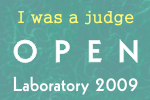






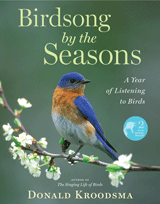

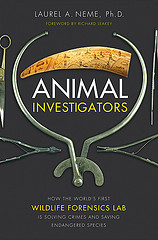



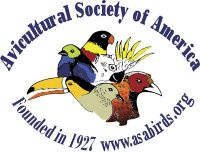

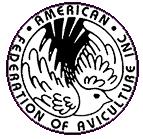



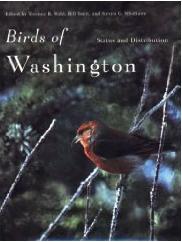










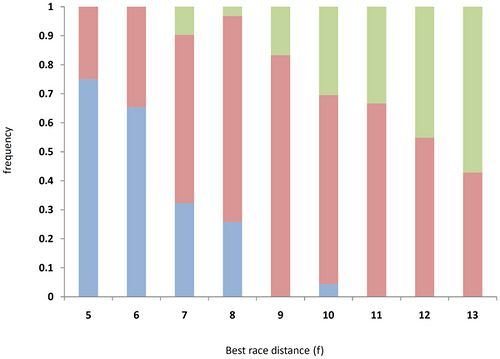



Comments
So, a biologist, an engineer, and a mathematician were hired to advise a wealthy investor on how to select the fastest racehorses ...
The joke may have to be revised.
Posted by: ecologist | February 8, 2010 3:27 PM
Great post!
My best friend and roommate during my PhD was a physiologist specialising in horses. She payed her way through her high school, undergrad, and PhD days by working in various vet school and racing stables in the UK and Ireland, and she's the one who first took me to the races and taught me to read the form and pedigrees on the card. She always said that pedigree matters much more for flat races; for any kind of jumping, you "go by eye". We only ever went to jump meets, and she taught me well: I lost money on my first visit, but after that I always at least broke even, and she says I have the best eye for a good horse of any non-"horsey person" she knows.
My Canadian friends aren't into the racing (and who can blame them - flat races on sand are so much less interesting than jumps over grass and mud), but we did all go to the races once. While my friends picked their horses based on sheer size, or the jockey's colours, or a cool name, I sat out the first race, noted the name of the winner (by several lengths), and only bet on its half-siblings for the rest of the day. Everyone else lost money; I left with a $140 profit in my pocket! That'll teach them to mock me for being a typical scientist and betting according to genes...
Posted by: Cath@VWXYNot? | February 8, 2010 5:57 PM